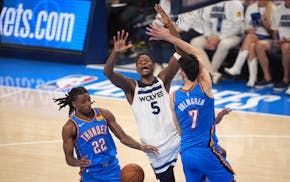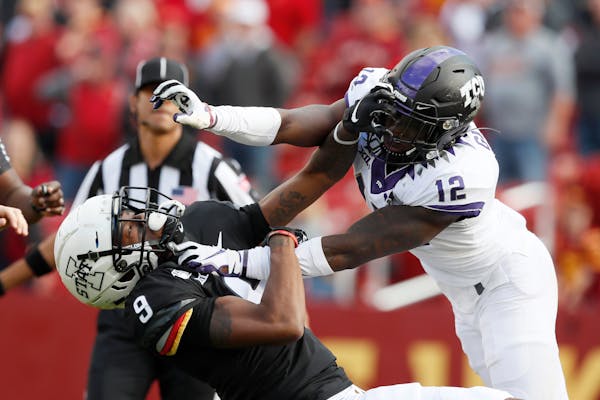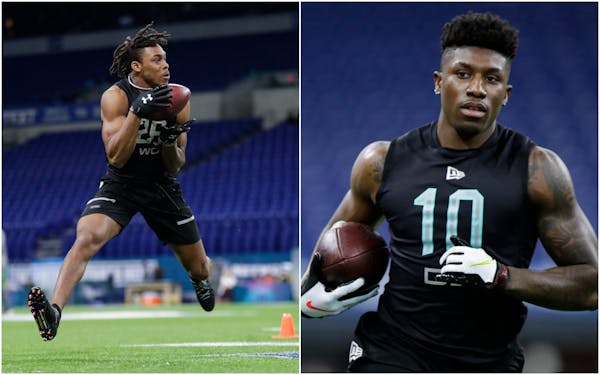With their first pick in the 2020 draft, the Vikings used the pick they received in the trade of Stefon Diggs to replace Stefon Diggs.
There is a pure logic to that. There is also a bit of nasty nostalgia.
When the Vikings traded Randy Moss to the Oakland Raiders after the 2004 season, the Raiders gave them the seventh pick in the 2005 draft.
With that pick, the Vikings chose Moss' replacement. His name was Troy Williamson. That didn't work out well.
Luckily for the Vikings, Justin Jefferson and Williamson have little in common other than positions. Williamson was fast and raw. Jefferson is built like a prototype NFL receiver, he has excellent hands and he excelled in the biggest games in college football last year.
Should the Vikings have used the first pick on a receiver, when they have such obvious needs at left tackle and cornerback?
Well, maybe. But their next move indicated that they weren't in love with any of the tackles or cornerbacks available at 22 or 25. They traded the 25th pick to the 49ers for the 31st pick and two other picks, an indication that there was no one player the Vikings were desperate to take.
They're playing the odds and adding depth.
Remember, just because Analyst X had the Vikings taking a tackle or cornerback with the 22nd pick doesn't mean that the Vikings made a mistake by choosing a receiver. What really matters is that Jefferson turns into a good player. And he looks like a safe pick to be highly productive in the Vikings' offense, with an accurate quarterback, and a star receiver in Adam Thielen to attack defensive attention and act as a mentor.
The downside: College receivers sometimes have trouble adapting to physical and complex NFL defenses. Some don't perform well as rookies; some never make it. For example: Williamson and Laquon Treadwell rank as two of the worst Vikings first-rounders in recent franchise history.
Jefferson would seem to have the skills and experience to be far better than either, but he'll have to prove himself quickly to fill a major hole in the Vikings' offense.
The NFL's first Casual Thursday draft featured a Winnebago in a driveway, a coach drafting players while wearing shorts on his patio, kids in the draft (living) room, and a vice president of personnel sitting uncomfortably on a sectional couch, making picks the way every fantasy footballer in the land does.
By the way, "Winnebago in a driveway" is not a euphemism. Lions general manager Bob Quinn had his IT support guy sitting in a Winnebago in a driveway.
So it's not a euphemism, but it is a metaphor. In a league of sports cars and pickup trucks, the Lions remain, in terms of speed and style, a Winnebago.
The Lions drafted Ohio State cornerback Jeff Okudah with the third pick in the draft. There's nothing wrong with that pick other than it was made to replace the star cornerback, Darius Slay, that Lions coach Matt Patricia ran off. So the Lions had the third pick in the draft and used it to make up for a mistake. This is how the Lions remain the Lions, year after year.
The remote version of the NFL draft wasn't bad. Seeing the players in their homes, with family, wearing sweats and robes, was more endearing than watching them try to outdo each other with runway-worthy suits.
I'll take Henry Ruggs, in his living room, wearing a robe.
The first Casual Thursday draft in NFL history produced a pretty good television show, if you don't mind NFL Commissioner Roger Goodell's long audition to become one of the robots on Westworld.
Goodell tried to promote the 2020 draft, which will be in Vegas, except this is 2020 and the draft was already moved from Vegas. So he promoted the next draft being in Dallas, even though it will be in Cleveland.
At least he doesn't run your favorite team.
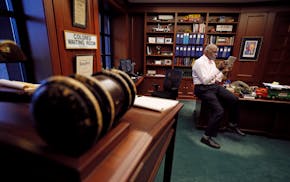
Souhan: Anxiety and depression in the NFL helped inspire Lindsey Young's children's book
Souhan: For Lynx star Napheesa Collier, 'Phee' is just fine

Souhan: Will the Wolves trade for Kevin Durant? Should they?
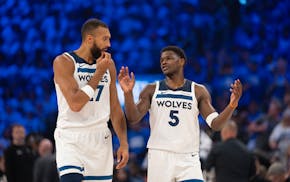
Souhan: If Edwards is a franchise player, he needs to act and play like it
